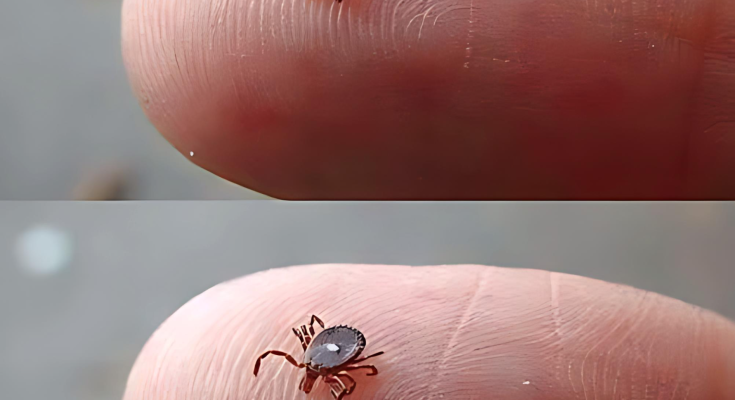A Surprising Backyard Encounter
Just a few weeks ago, I was mowing the lawn with my old, sputtering mower. My golden retriever, Mochi, was lazily sprawled out under the oak tree, completely at ease. Then, out of nowhere, I felt a strange tickle on my ankle.
At first, I thought it was just a mosquito. But when I glanced down, I spotted something far more unsettling—a tiny black speck clinging stubbornly to my skin. It wasn’t buzzing away or twitching like a mosquito. Carefully, I peeled it off. There it was: a lone star tick, unmistakable with its single white spot.
Why Ticks Are a Serious Threat
I usually brush off nature’s little nuisances. Mosquito bites? No big deal. Bee stings? Painful, but manageable. But ticks? They send me into full-on panic mode.
Ticks aren’t just creepy—they’re dangerous. And the lone star tick is among the most notorious carriers of serious diseases.
Get to Know the Lone Star Tick
Here’s what you need to know: the lone star tick gets its name from the single white spot on the back of the female. Charming? Not really.
Unlike some ticks that wait patiently for a host, the lone star tick is an active hunter. It seeks you out—especially in grassy or wooded spots. That’s why spotting it early and removing it fast is absolutely critical.

Don’t Panic — Act Quickly and Confidently
Finding a tick on your body can be terrifying. But staying calm is your best weapon. Panicking only slows you down.
Reach for fine-tipped tweezers and grab the tick as close to your skin as possible. Pull it out gently and steadily—no twisting or jerking! Yanking might leave parts behind, which can lead to infection.
Once removed, clean the bite area thoroughly with rubbing alcohol or soap and water. And whatever you do, don’t crush the tick—it can release harmful pathogens.
Keep the Tick for Reference
Most people toss the tick immediately. Resist that urge.
Place it in a sealed container or stick it onto tape. Write down the date and where you found it on your body. This info could be crucial if symptoms develop later.
Watch Your Health Closely
Over the next few weeks, be alert for warning signs like:
- Rash or redness around the bite
- Fever
- Unexplained fatigue
- Muscle aches
If anything feels off, call your doctor right away.
How to Stay Tick-Free Going Forward
If you’re heading into tick-prone areas, gear up:
- Wear long sleeves and pants
- Tuck pants into socks (yes, it might look silly, but it works!)
- Use repellents containing DEET, permethrin, or picaridin
When you come back inside, check yourself, your kids, and your pets thoroughly.
To protect your yard:
- Keep the grass trimmed
- Clear away brush and wood piles
- Create a gravel or wood chip barrier between your lawn and wooded areas
- Consider pesticides if ticks are a persistent problem
My husband and I are tackling this exact plan next week—because prevention is key.
Final Thoughts
Encountering a lone star tick is unsettling—they’re creepy, clingy, and can carry dangerous diseases. But you don’t have to panic.
With the right steps—removing the tick properly, monitoring your health, and taking preventive measures—you can stay safe and still enjoy the outdoors.
